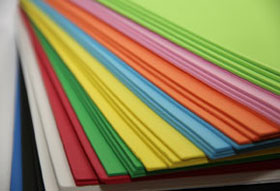Guide for Foam Sheets

Foam sheets are one of most versatile foam products on the market, and can be used in a range of applications including in packaging, in the roofs of cars and buses, home and office furniture, home interiors, picture frame mounting and more.
What is a foam sheet?
A foam sheet is exactly what the name suggests - a flat piece of foam that can be easily cut using craft knives or similar, and used in different designs and applications. They are available in a range of sizes, thicknesses and foam types, and can be custom cut to size (we do this at Easyfoam - click here).
Foam sheets can be used in most places, although the foam type must be considered in relation to its application. For example, a foam sheet that is not waterproof should not be used outside, and one that is not fire retardant should not be used in furniture applications inside the home.
What are the different types of foam sheets and their applications?
There are many different types of foam sheets on the market, so it's best to be clear on the most appropriate foam type for you.
If you’re looking for a foam padding sheet to use in a seat, a medium polyurethane foam sheet is usually best, but a high-firm or severe very high foam sheet can also offer additional firmness and support. Reflex foam sheets are also available. Reflex foam is a type of foam that instantly recovers from pressure (i.e. after someone has sat in a chair), and is also available in medium to firm densities, depending on preference.
Other foam types include specialist cot safe foam sheets, as well as reconstituted foam sheets that are used in commercial seating applications. Likewise, Plastazote foam sheets are non-absorbent and waterproof, and are commonly used in floatation devices and other recreational uses.

There are a few options for packaging applications. Both flat and convoluted packaging foam sheets offer great protection when transporting goods. For the transportation of electronics, antistatic packaging sheets are brilliant for protecting Electrostatic Discharge sensitive components.
Specialist foam sheets are also available for acoustic and aquatic applications too - from tank filters to soundproofing. In short, there’s most certainly a type of foam sheet that best suits your needs.
What adhesive to use for foam sheets?
The type of glue you use when looking to stick pieces of foam sheet together depends on where the foam is to be used. Likewise, another factor to consider is whether you are sticking your foam sheet to another foam sheet, or instead fixing it to a different material.
The best glue for sticking foam sheets together is an all-purpose spray adhesive glue, particularly in upholstery applications, as it offers a flexible seal and does not dry hard. For crafting and other general all-purpose applications, white or clear Gorilla glue will do the job. We recommend avoiding the use of hot glues.
How to glue foam sheets together?
To glue foam sheets together, cut your pieces to ensure they match or fit in the desired position. Cover your work surface with a protective sheet before liberally spraying the spray adhesive from at least 15cm afar. After a 10-15 second wait, the glue should become tacky, and you are then able to attach your pieces. It is recommended that you leave the glue to set for at least an hour.
Should you require any further guidance or have any questions, please contact our team who will be happy to assist.

